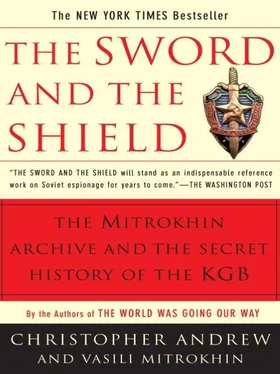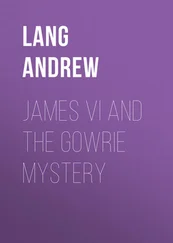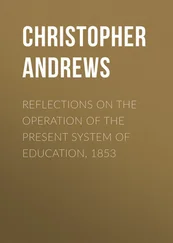the acquisition of documentary material on all the above requirements. 44
The “counter-revolutionary groups” which were of most immediate concern to Lenin and the Cheka after the civil war were the remnants of the defeated White armies and the Ukrainian nationalists. After the last White forces left Russian soil late in 1920, they stood no realistic chance of mounting another serious challenge to Bolshevik rule. That, however, was not Lenin’s view. “A beaten army,” he declared, “learns much.” He estimated that there were one and a half to two million anti-Bolshevik Russian émigrés:
We can observe them all working together irrespective of their former political parties… They are skillfully taking advantage of every opportunity in order, in one way or another, to attack Soviet Russia and smash her to pieces… These counter-revolutionary émigrés are very well informed, excellently organized and good strategists. 45
In the early and mid-1920s INO’s chief target thus became the émigré White Guards, based mainly in Berlin, Paris and Warsaw, who continued to plot—far less effectively than Lenin supposed—the overthrow of the Bolshevik regime.
The other “counter-revolutionary” threat which most concerned Lenin and the Bolshevik leadership came from Ukrainian nationalists, who had fought both Red and White forces in an attempt to win their independence. In the winter of 1920 and the spring of 1921 the entire Ukrainian countryside was in revolt against Bolshevik rule. Even after the brutal “pacification” of Ukraine by the Red Army and the Cheka, partisan groups who had taken refuge in Poland and Romania continued to make cross-border raids. 46In the spring of 1922 the Ukrainian GPU received intelligence reports that Simon Petlyura’s Ukrainian government-in-exile had established a “partisan headquarters” under General Yurko Tutyunnik which was sending secret emissaries to the Ukraine to establish a nationalist underground. 47
The GPU was ordered not merely to collect intelligence on the émigré White Guards and Ukrainian nationalists but also to penetrate and destabilize them. 48Its strategy was the same against both opponents—to establish bogus anti-Bolshevik undergrounds under GPU control which could be used to lure General Tutyunnik and the leading White generals back across the frontier.
The first step in enticing Tutyunnik back to Ukraine (an operation codenamed CASE 39) was the capture of Zayarny, one of his “special duties” officers, who was caught crossing the frontier in 1922. Zayarny was successfully turned back by the GPU and sent to Tutyunnik’s headquarters with bogus reports that an underground Supreme Military Council (Vysshaya Voyskovaya Rada or VVR) had been established in Ukraine and was anxious to set up an operational headquarters under Tutyunnik’s leadership to wage war against the Bolsheviks. Tutyunnik was too cautious to return immediately but sent several emissaries who attended stage-managed meetings of the VVR, at which GPU officers disguised as Ukrainian nationalists reported the rapid growth of underground opposition to Bolshevik rule and agreed on the urgent need for Tutyunnik’s leadership. Like Zayarny, one of the emissaries, Pyotr Stakhov, a close associate of Tutyunnik, was recruited by the GPU and used as a double agent.
Attempts to persuade Tutyunnik himself to return to Ukraine finally succeeded on June 26, 1923. 49Tutyunnik, with his bodyguard and aides, arrived at a remote hamlet on the Romanian bank of the river Dniester, where Zayarny met him with the news that the VVR and Pyotr Stakhov were waiting on the other side. At 11 p.m. a light from the Ukrainian bank signaled that it was safe for Tutyunnik and his entourage to cross the river. Still cautious, Tutyunnik sent his bodyguard to make sure that no trap had been laid for him. Stakhov returned with the bodyguard to reassure him. According to an OGPU report, Tutyunnik told him, “Pyotr, I know you and you know me. We won’t fool each other. The VVR is a fiction, isn’t it?” “That is impossible,” Stakhov replied. “I know them all, particularly those who are with me [today]. You know you can rely on me…” Tutyunnik got into the boat with Stakhov and crossed the Dniester. Once he was in the hands of the OGPU, letters written by Tutyunnik or in his name were sent to prominent Ukrainian nationalists abroad saying that their struggle was hopeless and that he had aligned himself irrevocably with the Soviet cause. He was executed six years later. 50
OPERATIONS AGAINST THE White Guards resembled those against Ukrainian nationalists. In 1922 the Berlin residency recruited the former Tsarist General Zelenin as a penetration agent within the émigré community. A later OGPU report claimed, possibly with some exaggeration, that Zelenin had engineered “a huge schism within the ranks of the Whites” and had caused a large number of officers to break away from Baron Peter Wrangel, the last of the White generals to be defeated in the civil war. Other OGPU moles praised for their work in disrupting the White Guards included General Zaitsev, former chief of staff to the Cossack Ataman A. I. Dutov, and the ex-Tsarist General Yakhontov, who emigrated to the United States. 51
The OGPU’s greatest successes against the White Guards, however, were two elaborate deception operations, codenamed SINDIKAT (“Syndicate”) and TREST (“Trust”), both of which made imaginative use of agents provocateurs. 52SINDIKAT was targeted against the man believed to be the most dangerous of all the White Guards: Boris Savinkov, a former Socialist Revolutionary terrorist who had served as deputy minister of war in the provisional government overthrown in the Bolshevik Revolution. Winston Churchill, among others, was captivated by his anti-Bolshevik fervor. “When all is said and done,” Churchill wrote later, “and with all the stains and tarnishes there be, few men tried more, gave more, dared more and suffered more for the Russian people.” During the Russo-Polish War of 1920, Savinkov was largely responsible for recruiting the Russian People’s Army which fought under Polish command against the Red Army. Early in 1921 he founded a new organization in Warsaw dedicated to the overthrow of the Bolshevik regime: the People’s Union for Defence of Country and Freedom (NSZRiS), which ran an agent network inside Soviet Russia to collect intelligence on the Bolsheviks and plan uprisings against the regime.
The first stage of the operation against Savinkov, SINDIKAT-1, successfully neutralized the NSZRiS agent network with the help of a Cheka mole within his organization. Forty-four leading members of the NSZRiS were paraded at a show trial in Moscow in August 1921. 53SINDIKAT-2 was aimed at luring Savinkov back to Russia to star in a further show trial and complete the demoralization of his émigré supporters. Classified KGB histories give the main credit for the operation to the head of the OGPU counter-intelligence department, Artur Khristyanovich Artuzov (later head of INO), the Russian son of an immigrant Swiss-Italian cheesemaker, assisted by Andrei Pavlovich Fyodorov and Grigori Sergeyevich Syroyezhkin. 54Though SINDIKAT-2 made skillful use of agents provocateurs, however, KGB records fail to acknowledge how much they were assisted by Savinkov’s own increasing tendency to fantasize. During a visit to London late in 1921 he claimed improbably that the head of the Russian trade delegation had suggested that he join the Soviet government. Savinkov also alleged that Lloyd George and his family had welcomed him at Chequers by singing “God Save the Tsar”; in reality, the song was a hymn sung in Welsh by a Welsh choir at a pre-Christmas celebration. In July 1923 Fedorov, posing as a member of an anti-Bolshevik underground, visited Savinkov in Paris, where he had installed his headquarters after the collapse of the NSZRiS, and persuaded him to send his aide, Colonel Sergei Pavlovsky, back to Russia with Fedorov for secret talks with the non-existent underground. Once in Moscow, Pavlovsky was turned in by the OGPU and used to lure Savinkov himself to Russia for further talks. On August 15 Savinkov crossed the Russian border with some of his supporters and walked straight into an OGPU trap. Under OGPU interrogation Savinkov’s resistance swiftly collapsed. At a show trial on August 27 Savinkov made an abject confession of his counter-revolutionary sins:
Читать дальше











